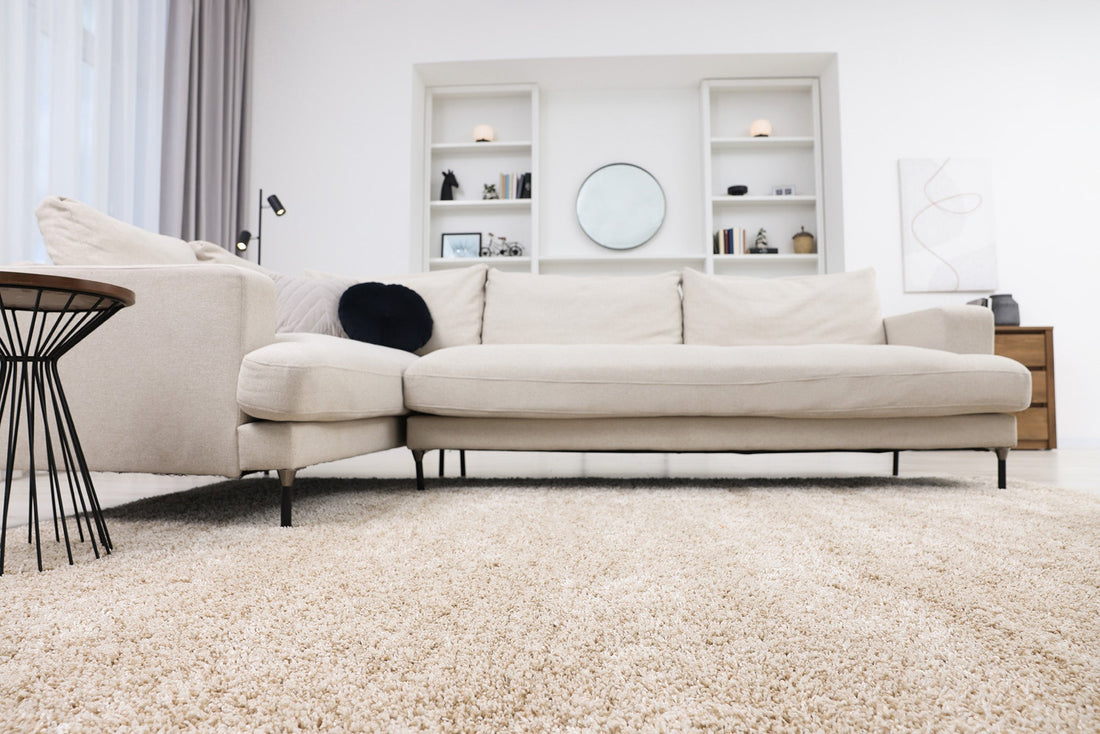
What Carpet Face Weight Means for Your Flooring
Share
Shopping for new carpet can be a bit overwhelming with all the terms and specifications to consider. One phrase you'll hear often is "carpet face weight." But what exactly does this mean, and how important is it for choosing a quality carpet that will last in your home?
At Flooring Attic, we believe that understanding your options is the first step to a beautiful new floor. Let's break down this key characteristic together.

What is Carpet Face Weight?
At its simplest, what is carpet face weight? It refers to the total weight of the carpet's surface fibers (the pile) per square yard, measured in ounces. It's an important number because it tells you how much yarn is actually in the visible part of the carpet. It does not include the weight of the backing materials, the adhesive, or the pad that goes underneath. This distinction is crucial because a carpet's total weight can be misleading—a heavy backing might make a carpet feel substantial, but the quality of the fibers is what truly matters for performance.
The average carpet face weight for residential carpet is usually somewhere between 35 and 60 ounces. You can find carpets outside this range, but this is a good place to start your comparison.
What Does Carpet Face Weight Mean for Quality?
This is where things get a little more interesting. A lot of people think a higher face weight automatically means a better carpet. While it's a good general indicator, that's not the whole story.
A higher carpet face weight generally means:
- More Fiber: You're getting more yarn packed into every square yard.
- A Plusher Feel: With more yarn, the carpet often feels thicker, softer, and more luxurious underfoot.
- Better Appearance Retention: A fuller, denser pile can help the carpet look better and newer for longer, as long as other factors are also in play.
However, face weight alone can be a bit deceptive. Imagine two carpets, both with the same face weight. If one has a very tall, loose pile and the other has a shorter, very dense pile, the shorter, denser one will likely be more durable and resist matting better over time. This brings us to a much more critical factor: density.
Face Weight vs. Density: A Crucial Distinction
While closely related, carpet face weight and density are not the same thing.
- Face Weight measures the amount of fiber.
- Carpet Density measures how tightly packed those fibers are.
Density is a more reliable indicator of long-term durability and resilience. You can often check for density yourself by bending a carpet sample backwards. The less backing you see, the denser the carpet is, and the better it will hold up against crushing and matting. We always recommend looking for a good balance of both. A high-quality carpet feels plush and luxurious (high face weight) but also resists crushing (high density).
How to Evaluate a Carpet's Quality (Beyond Just Face Weight)
To truly find the best carpet for your home, you need to look at the whole picture. Here are a few other key factors to consider:
Fiber Type
The material of the fibers is perhaps the most important factor. For example, a high-quality nylon carpet is generally more resilient and durable than a high-face-weight polyester carpet.
Yarn Twist
A higher twist number (TPI, or turns per inch) means the fibers are twisted more tightly together. This makes the carpet more resistant to fraying and matting, and it's a great indicator of quality.
Carpet Construction
The way the carpet is made (e.g., loop pile vs. cut pile) also impacts its performance. Loop pile carpets like Berber are often incredibly durable even with a lower face weight.
Backing and Padding
The quality of the carpet's backing and the padding underneath it provide crucial support. A good pad acts as a shock absorber, protecting the carpet from wear and tear.
Choosing the Right Carpet Face Weight for Your Buford, GA Home
So, with all this information, how do you make a practical choice?
Carpet for Low-Traffic Areas
For bedrooms, guest rooms, or formal dining rooms, a face weight of 30-50 ounces may be perfectly fine. You can prioritize a softer feel here.
Carpet for High-Traffic Areas
For living rooms, hallways, and stairs, a face weight of 40-60 ounces is generally a good starting point. You'll want to prioritize density and a durable fiber type in these areas. For extremely busy homes, you might even consider a premium carpet with a face weight above 60 ounces.
Discover Beautiful, Plush Carpet Flooring with Flooring Attic
Understanding carpet face weight is a key step in choosing the right carpet. While it’s not the only indicator of quality, it’s a great starting point for a more informed conversation about durability, density, and fiber type. We’re here to help you navigate these specifications and find a floor you'll love.
Call or visit Flooring Attic in Buford, GA, to explore our vast selection of quality carpet products. With a 39-year history as a Top 10 Flooring Retailer, we're committed to making your flooring purchase as easy as possible. We offer quality products and excellent service and pricing to the Southeast, including Georgia, Florida & Alabama.
